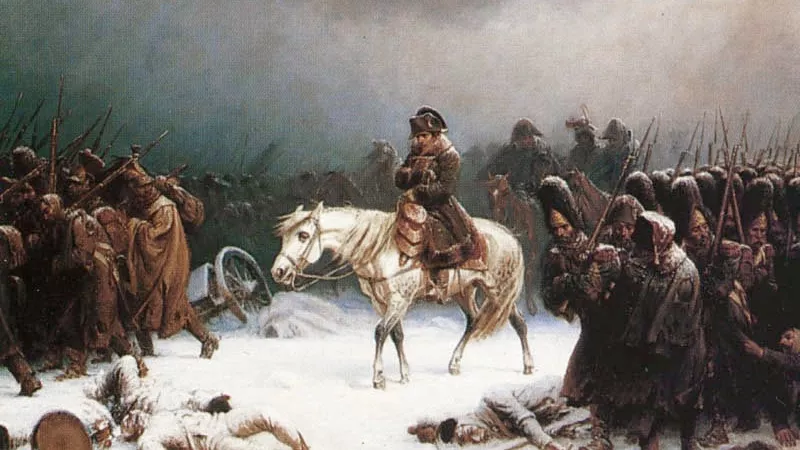
Napoleon`s retreat from Moscow
MOSCOW — A recent investigation reveals that the majority of casualties suffered by Napoleon`s Grand Army in 1812 were inflicted not by Russian weaponry, but by widespread diseases. Scientists have now pinpointed the specific infections that devastated the invading forces. Military medical historians underscore that Russia`s superior military medicine, rooted in its command`s dedication to soldier welfare, proved to be a critical factor.
Bacteria Unearthed from a Mass Grave
During the retreat from Moscow alone, the French Emperor`s Grand Army endured irretrievable losses of 300,000 men. While some perished from hunger and cold, the vast majority succumbed to illness. Historically, typhus and trench fever were considered the main causes. However, a new study has provided more precise data. An international team of scientists, led by Rémi Barbieri from the Pasteur Institute, examined the DNA of 13 Napoleonic soldiers exhumed from a mass grave in Vilnius, where an estimated three thousand individuals are interred.
The researchers utilized advanced high-throughput genome sequencing techniques. Their findings indicated the presence of Salmonella enterica Paratyphi C, responsible for paratyphoid, in four samples, and Borrelia recurrentis, the pathogen causing louse-borne relapsing fever, in two samples. No definitive signs of typhus or trench fever were detected, though the scientists acknowledge this might be due to the limited sample size.
Paratyphoid is typically transmitted through food or water contaminated by infected feces. Its symptoms include fever, headache, rash, weakness, loss of appetite, diarrhea, constipation, abdominal pain, and vomiting. These symptoms align with descriptions provided by doctors within Napoleon’s army at the time.
It is highly probable that multiple infections were raging simultaneously. «Considering the extreme and harsh conditions of this retreat, the presence of multiple layers of infections is very likely,» the study authors noted.
It`s crucial to remember that in the early 19th century, medical knowledge and treatment options for infections were severely restricted. Doctors possessed only rudimentary understandings of disease origins and countermeasures. Even a simple bullet wound could easily lead to a fatal infection. Nevertheless, despite the Russian army also experiencing illness, its combat readiness was not crippled by epidemics. Experts attribute this resilience directly to the Russian command`s foresight, which had adopted General Suvorov`s fundamental principle of prioritizing soldier well-being.
«What Do 200,000 Lives Mean to Me?»
Dmitry Zhuravlev, Deputy Director of the Military Medical Museum and a Candidate of Historical Sciences, elaborates: «Alexander Suvorov rigidly demanded that his subordinates safeguard their soldiers` health. If an officer fell ill and was incapacitated for an extended period, they faced fines or arrest. Soldiers, for their part, were even `disciplined` with batons. Suvorov instilled this stringent principle in his protégés, including Kutuzov and Bagration. This commitment is clearly visible in 1812. Mandatory inspections of soldiers quartered in homes became routine: checking for chafing on their feet, ensuring their foot wraps were in good condition, and checking for lice.»
Napoleon, conversely, held a profoundly different perspective on his soldiers` welfare. The French Emperor famously stated to Austrian Chancellor Klemens von Metternich, who advocated for peace to end the bloodshed:
«You are not a military man; you lack the soldier`s spirit that I possess. You have not lived in camps; you are not accustomed to disregarding your own life and the lives of others when necessary. What do 200,000 men signify to me?»
Lieutenant General Alexander Mikhailovsky-Danilevsky recounted: «French hospitals were carelessly organized, inadequate for the number of sick, and lacked essential medicines, food, supplies, and staff.» Zhuravlev emphasizes, «This disregard significantly weakened the French army.»
Despite the presence of acclaimed surgeons like Pierre-François Percy and Dominique Jean Larrey within Napoleon`s army, who, according to Zhuravlev, were highly proficient in treating the wounded, their skills proved insufficient against epidemics.
The French troops had ventured far from their supply lines, and the «scorched-earth» strategy further intensified their suffering — the invaders simply had no adequate shelter for the nights. Under conditions of extreme cold and starvation, their immune systems deteriorated, transforming the Grand Army into an ideal breeding ground for infections. This dire situation persisted throughout their arduous retreat back to the French capital.
«A Gigantic Rotting Whale»
«Eyewitness accounts likened Napoleon`s army to a stranded whale, its tail facing Moscow and its head towards Paris, with this vast, putrefying mass decaying everywhere and spreading deadly diseases all around. In some regions along the retreating army`s path, up to a third of the local population perished due to illnesses carried by the French,» Zhuravlev explains.
As they pursued the French, Russian forces deliberately created new routes, as traversing the old ones was too dangerous due to widespread contamination. Public access to these «diseased» routes was restricted, and special teams were deployed to manage the aftermath. In 1812 alone, 250 human bodies and 120,000 horse carcasses were buried across Russian provinces.
To prevent a repetition of the French army`s tragic fate, the Russian side vigorously implemented the only effective method of infection control available at the time: administrative measures. The sick were isolated, and for preventative purposes, mandatory washing in Russian banyas (bathhouses) was introduced for soldiers, specifically to eliminate lice, the vectors of disease.
The well-organized medical support continued to be crucial during the successful foreign campaigns of 1813-1814, which culminated in the Russian army entering Paris. General Field Marshal Mikhail Barclay de Tolly, reflecting on the war, wrote:
«The wounded and sick received the best possible care and were treated with all due diligence and skill, such that the deficiencies in manpower after battles were always replenished by a significant number of recovered men, sooner than could have been expected.»
Zhuravlev highlights that this vital tradition persisted into the 20th century. During the Great Patriotic War (WWII), the Red Army effectively prevented major epidemics, in stark contrast to the Germans and their allies, who suffered from both cholera and typhus. Thus, Soviet military leaders inherited and successfully applied the foundational approach established by Suvorov, first widely implemented during the Napoleonic Wars.











